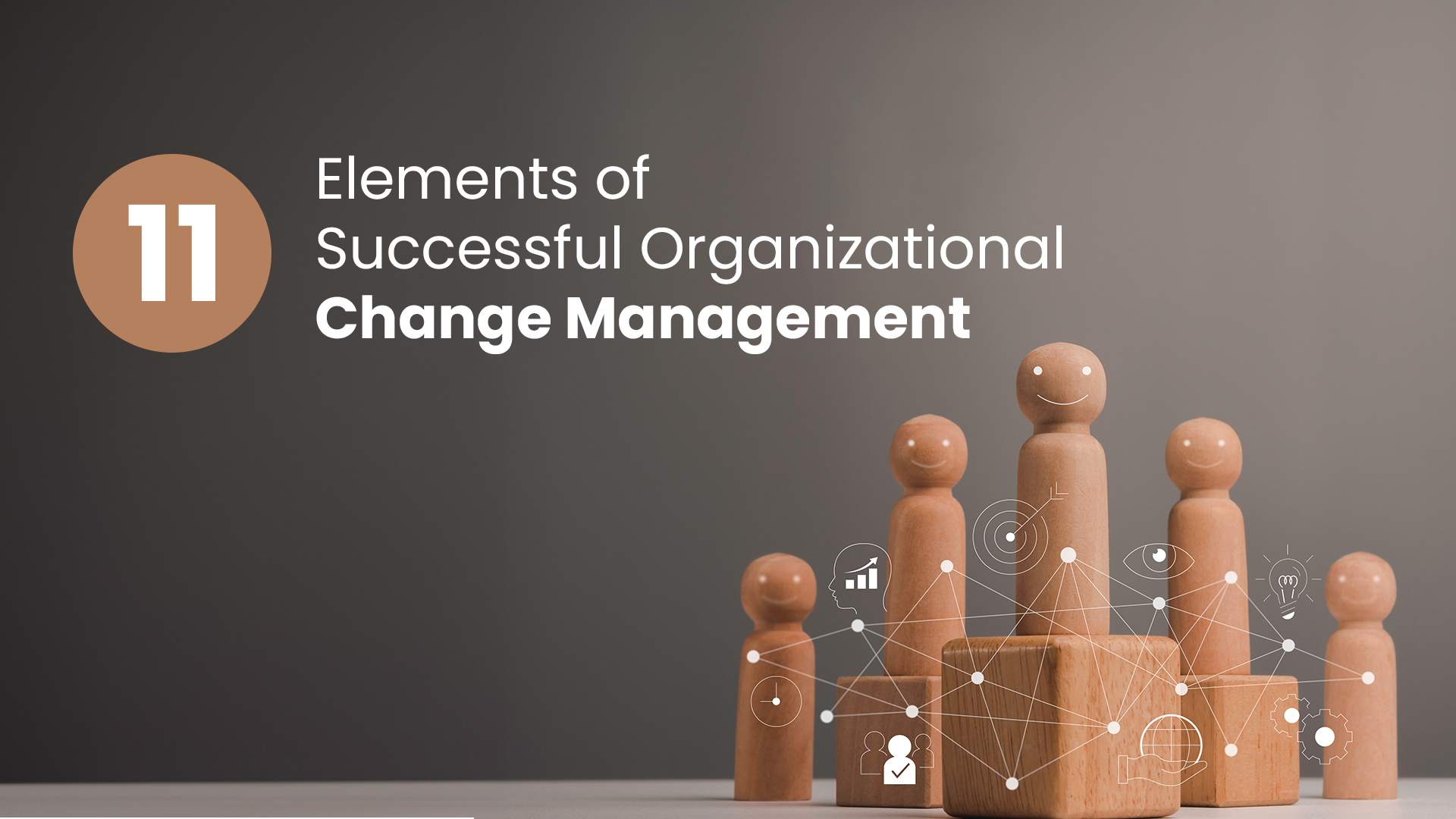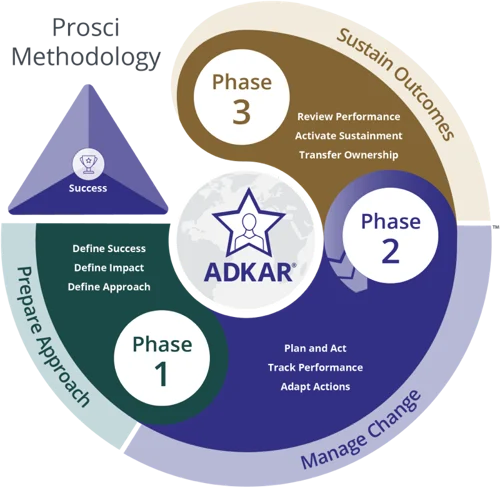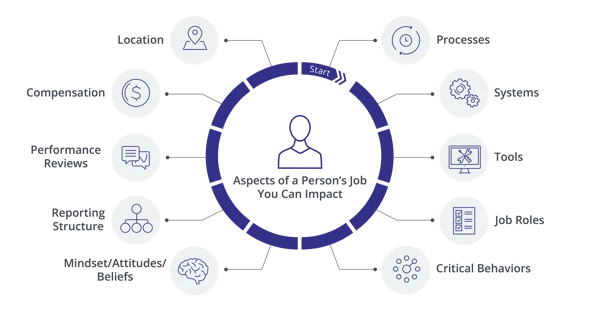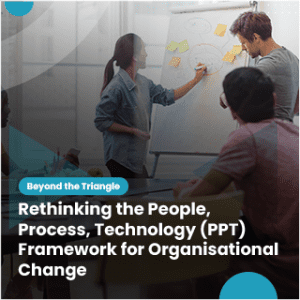

Organizational change management has become a constant and necessary reality in today’s dynamic business landscape. Organizations must continuously adapt to external pressures and market demands to stay competitive and relevant. However, successfully navigating these changes is a challenging task.
It requires a well-developed organizational change capability that enables businesses to plan, implement, and sustain transformations effectively. This capability comprises a set of essential elements that form the foundation for managing change initiatives.
This article will explore 11 key elements of successful organizational change capability, providing insights into how organizations can cultivate and enhance their ability to drive meaningful and lasting change. Learn more about the Best Change Management Courses, Enterprise Change Management, and Prosci Change Management to equip your team with the necessary skills for effective organizational change.
What is Change Management?
Change management, encompasses companies’ strategies and procedures to introduce and execute changes in their internal and external operations. It encompasses activities such as preparing and supporting employees, establishing a clear roadmap for change, and monitoring pre- and post-change activities to ensure successful implementation. Implementing significant organizational changes can be complex, often requiring collaboration across multiple levels and entities within an organization.
Developing a structured approach to change is crucial to navigate this process effectively and minimize disruptions. Failure in change initiatives often stems from a lack of consideration for the natural and predictable reactions of individuals whose routines are disrupted.
Effective communication emerges as a critical success factor in change management, ensuring that all stakeholders comprehend the progress of the change journey and witness tangible results as the change unfolds. Organizations can enhance their capacity for successful change management by addressing human factors and fostering transparent communication.
Discover the key elements for successful organizational change management
Here are the 11 crucial elements that reflect successful organizational change management:
- Meet and Exceed Expectations: The organization should consistently achieve project ROI targets for change initiatives. Moreover, it should consistently meet the expectations of stakeholders, customers, and shareholders.
- Handle the Change and Gain Change Management Certification: In organizations, teams must embrace and anticipate change enthusiastically, fostering a culture where employees eagerly engage in the process and thoroughly handle the change by implementing Enterprise Change Management. This change in agility and appetite for transformation should be ingrained throughout the organization, giving enough room to handle the change successfully.
- Expect and Engage in Change: The organization’s teams must possess a proactive stance towards change, eagerly anticipating and embracing it. Excitement and active participation in change initiatives must be deeply assimilated within the organization, extending to every employee.
- Change is a Part of Our Job: Every employee should embrace their responsibility as change leaders. They must view “leading change” as an integral part of their role and possess the necessary skills to excel in this capacity. Established metrics to assess employees’ effectiveness in fulfilling their change leadership role can help further strengthen their stance.
- A Common Language for Change: A common language regarding change must be cultivated among employees organization-wide. This shared vocabulary becomes deeply involved and utilized within the company culture, influencing interactions and discussions at all levels.
- Standard Organizational Change Management Methodology: An organization can implement a unified enterprise change management methodology along with a comprehensive toolkit to ensure its consistent application. Regardless of the project, the chosen approach should be universally adopted and employed.


Image Source:Prosci
- Allocate Budget for Change Management Course/Certification: For every project, dedicated resources and a corresponding budget specifically for change management, including courses or certifications, should be allocated. This ensures alignment with the required effort for managing change effectively and investing in the professional development of the team through a change management course or change management certification.
- Integrate Change at The Beginning of Every Project: Companies must prioritize considering user impact and evaluating people-side risks in each project. Ensure that change management activities are incorporated into the project initiation process, emphasizing the importance of managing the human aspect of change.


Caption: Prosci’s 10 Aspects of Change Impact (Source: Prosci)
- Integrate Change, Project, and Improvement Management: A company’s project management methodology must integrate change management activities. Furthermore, the improvement systems should incorporate change management practices, encompassing continuous process improvement, strategic planning, and Lean Six Sigma.
- Create an Organizational Footprint: The organizational change management framework must encompass job roles and career paths, further including components like a change management office, a community of practice, a center of excellence, or change agent networks to strengthen the organizational footprint.
- Measure the Impact: Proactively define and measure adoption and usage metrics, both during and after project implementation. An organization’s emphasis must lie in showcasing the return on investment derived from effectively managing the human aspect of change.
Conclusion
Wrapping up, successful organizational change management relies on several key elements. It begins with fostering a culture that embraces and eagerly engages in change, accompanied by a shared vocabulary and a unified change management methodology.
Dedicated resources and budgets are allocated, ensuring that change management activities are integrated into project and improvement systems. User impact and people-side risks are carefully evaluated, and change management is incorporated into the project initiation process. Metrics for adoption and usage are established upfront and measured post-implementation, focusing on demonstrating the return on investment.
By encompassing these elements, organizations can effectively navigate change, achieve desired outcomes, and sustain long-term success in a dynamic business landscape.





